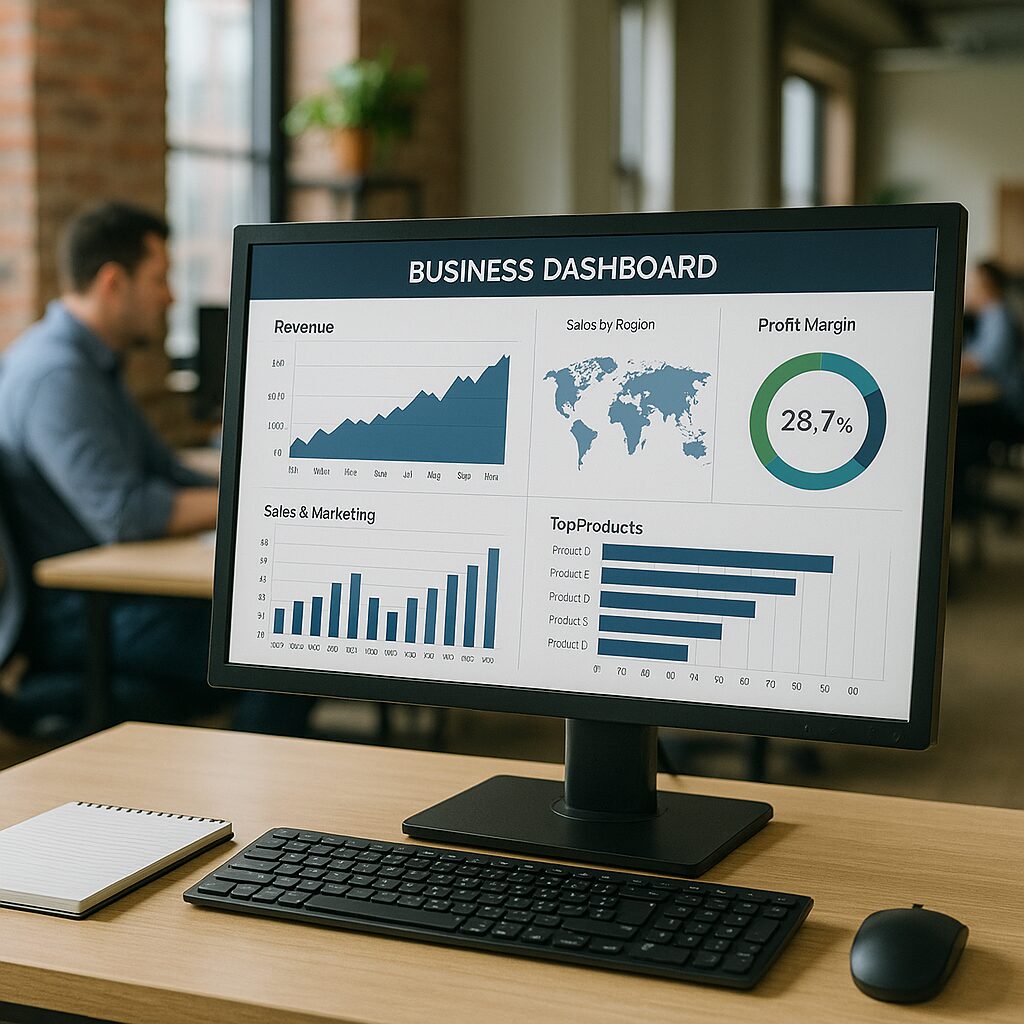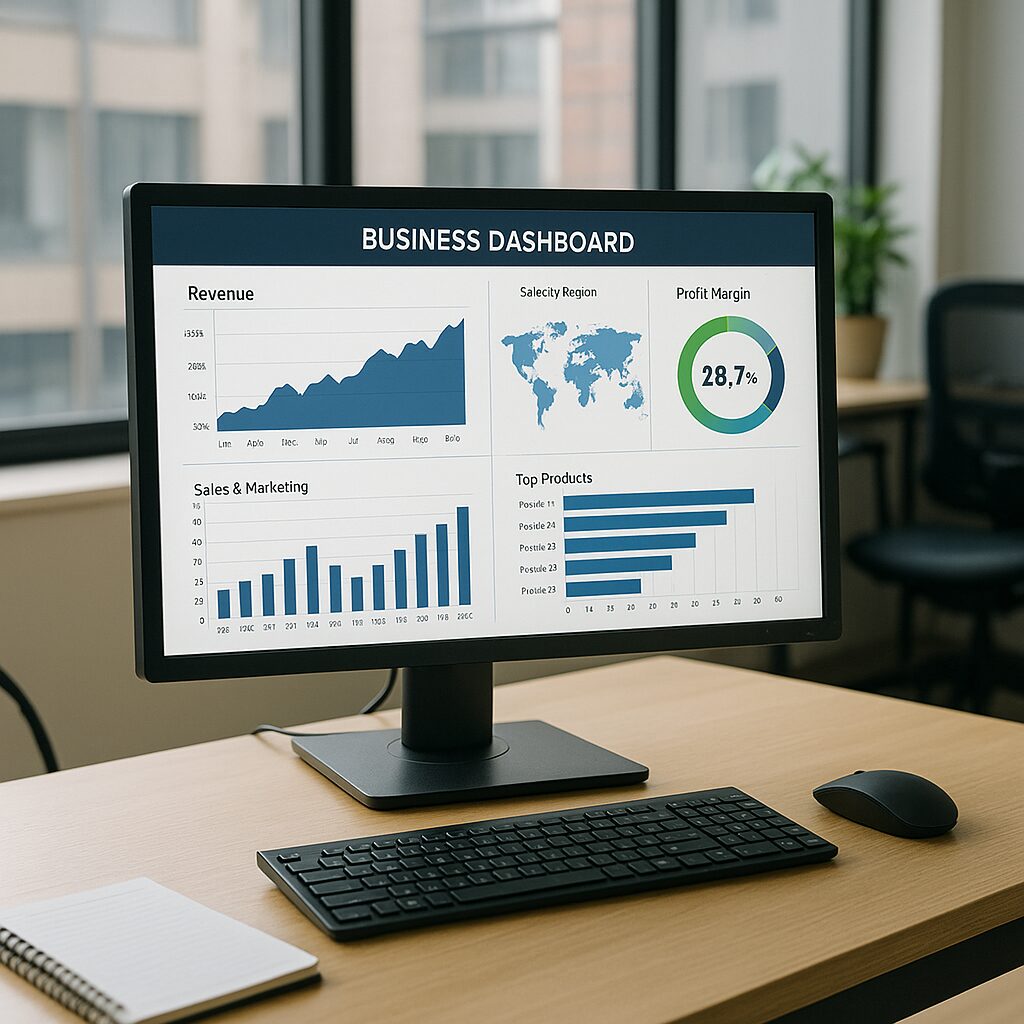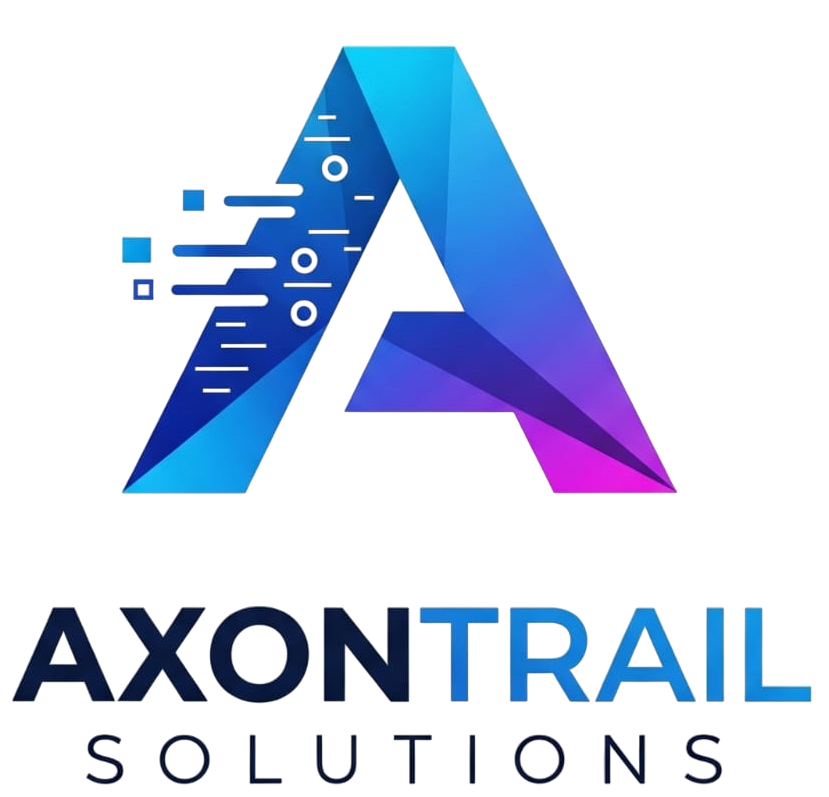
- August 28, 2025
- AxonTrail Editorial Team
- 0
Table of Contents
Toggle7 Powerful Ways a Dashboard to Prevent Business Losses Can Protect Your Business
Running a business in today’s world is like steering a ship through unpredictable waters. One moment you are sailing smoothly, the next you are hit by sudden storms in the form of market shifts, rising costs, compliance issues, or operational errors. Many small and medium enterprises (SMEs) face unexpected losses not because they lack effort, but because they lack visibility.
This is where a Dashboard to Prevent Business Losses becomes not just a tool, but a lifeline. It transforms scattered data into meaningful insights, allowing decision-makers to spot risks early, monitor performance, and take corrective action before problems spiral out of control.
In this blog, we will explore 7 powerful ways dashboards help businesses stay profitable, competitive, and resilient.
1. Real-Time Visibility into Operations
One of the greatest advantages of a Dashboard to Prevent Business Losses is real-time visibility. Instead of waiting for monthly reports, business leaders can access live data on sales, inventory, expenses, and customer behaviour. Imagine running a retail store chain. With dashboards, you can instantly see which outlets are underperforming, where inventory is piling up, or which products are running out of stock. This ability to act fast means you prevent revenue leakage before it happens.
2. Identifying Revenue Leakage
Revenue leakage often occurs silently—through unnoticed discounts, billing errors, or unpaid invoices. By the time businesses detect it, they may have lost lakhs in revenue. A Dashboard to Prevent Business Losses highlights these blind spots by tracking anomalies in payment cycles, mismatched billing, or excessive discounts. For example, dashboards can flag unpaid invoices beyond 30 days or highlight frequent product returns. Early detection allows managers to plug leaks quickly, protecting the bottom line.
3. Forecasting and Predictive Analytics
Prevention is always better than cure. A Dashboard to Prevent Business Losses uses historical and current data to predict future risks. Whether it’s forecasting sales drops, demand fluctuations, or supply chain delays, predictive analytics gives businesses an edge.
Manufacturers can forecast material shortages before they halt production. Retailers can anticipate seasonal demand surges. Service providers can prepare for customer churn signals. By predicting what could go wrong, businesses prepare better and reduce financial risks.
4. Monitoring Expenses and Cost Control
Uncontrolled expenses are a major reason behind business losses. Dashboards act as financial guardians by showing exactly where money is being spent. With a Dashboard to Prevent Business Losses, you can:
Compare budgeted vs. actual expenses.
Identify cost-heavy departments.
Track overtime payments and wastage.
Monitor supplier contracts and procurement efficiency.
The clarity helps decision-makers cut unnecessary costs and redirect resources toward growth-driving activities.
5. Customer Insights and Retention
Losing customers is equivalent to losing money. But many businesses don’t notice churn until it’s too late. Dashboards bring customer behaviour into focus—tracking engagement, purchase frequency, complaints, and feedback.
A Dashboard to Prevent Business Losses shows patterns like falling repeat orders, inactive accounts, or negative feedback trends. By acting on these signals—through loyalty programs, better communication, or targeted offers—businesses can retain customers and secure long-term profitability.

6. Compliance and Risk Management
Non-compliance with legal, tax, or industry regulations can result in penalties, reputation damage, and financial setbacks. Dashboards reduce this risk by monitoring compliance metrics in real time.
For example, GST filing reminders, overdue statutory payments, or safety standard breaches can all be highlighted in a Dashboard to Prevent Business Losses. With proactive alerts, businesses avoid fines and safeguard their reputation.
7. Improving Decision-Making with KPIs
A business is only as strong as its decisions. Dashboards consolidate Key Performance Indicators (KPIs) into one screen, allowing leaders to make faster, data-backed choices. Whether it’s deciding which product line to expand, which supplier to continue with, or where to cut costs, a Dashboard to Prevent Business Losses ensures decisions are based on facts, not guesswork.
When employees at all levels can see the same data, alignment improves, communication strengthens, and costly missteps are avoided.
Case Example: An SME That Avoided Losses with Dashboards
Let’s take the case of a mid-sized wholesale distributor in India. The company was frequently facing losses due to delayed supplier payments, poor stock control, and missed customer invoices. After implementing a Dashboard to Prevent Business Losses, the leadership was able to:
Detect unpaid invoices worth ₹20 lakhs within 15 days.
Reduce overstocking by 30% by aligning purchase orders with real-time sales.
Cut late fees on supplier payments by 80%.
Within six months, the company turned around its financial position and achieved positive cash flow.
Why SMEs Cannot Afford to Ignore Dashboards
SMEs often believe dashboards are only for large corporations. The truth is, they are more critical for small businesses because even small mistakes can cause major losses. By using a Dashboard to Prevent Business Losses, SMEs gain the same decision-making power as big companies—without needing large teams or costly consultants.
Dashboards empower small teams to act like giants, spotting risks early and ensuring survival in competitive markets.
Conclusion
In today’s unpredictable business landscape, dashboards are not a luxury—they are a necessity. From monitoring operations to preventing revenue leakage, from predicting risks to retaining customers, a Dashboard to Prevent Business Losses is your shield against uncertainty.
Every decision counts, and dashboards ensure those decisions are timely, data-driven, and profitable.
FAQs
1. What is a Dashboard to Prevent Business Losses?
It is a data visualisation tool that helps businesses monitor performance, detect risks, and prevent financial setbacks.
2. How do dashboards save SMEs from losses?
They provide real-time insights into sales, expenses, compliance, and customer behaviour, helping businesses act before losses occur.
3. Can dashboards predict future risks?
Yes, predictive analytics in dashboards forecast sales drops, supply chain issues, and customer churn.
4. Are dashboards expensive for SMEs?
Not necessarily. Many affordable, cloud-based dashboards are available for small businesses.
5. What losses can dashboards prevent?
Dashboards prevent losses from unpaid invoices, overstocking, compliance penalties, customer churn, and high expenses.
6. Can dashboards improve decision-making?
Yes, they consolidate KPIs, making decisions faster and data-driven.
7. Do dashboards help with compliance?
Yes, dashboards alert businesses to deadlines, tax filings, and industry regulations to avoid penalties.
8. How do dashboards help in customer retention?
By identifying early signs of churn, businesses can take action with loyalty programs and better service.
9. Can dashboards integrate with existing systems?
Most modern dashboards integrate easily with CRM, or accounting software.
10. Is a Dashboard to Prevent Business Losses only for finance?
No, it covers operations, sales, inventory, HR, and compliance, making it a holistic business tool.
